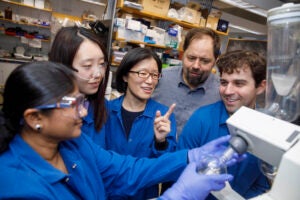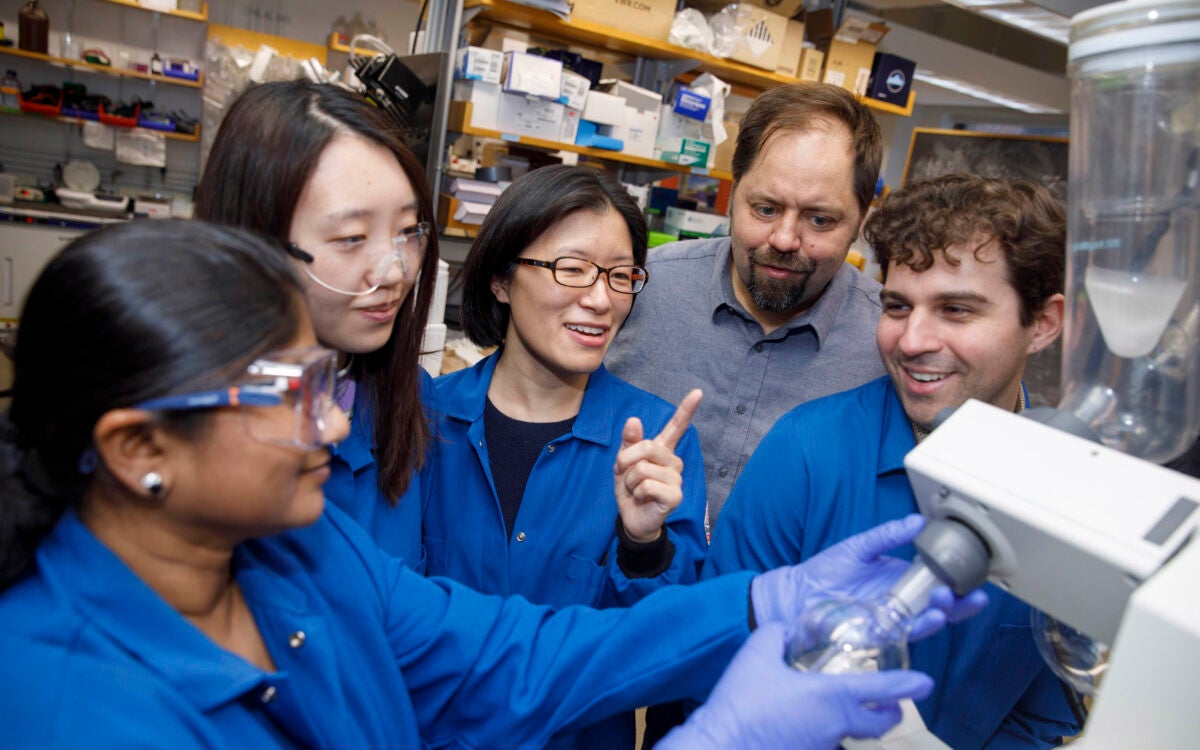Researchers gain ground in treatment options for disfiguring tumor
A team of researchers led by Harvard School of Dental Medicine (HSDM) Dean for Research Bjorn Olsen has discovered a mechanism for the rapid growth seen in infantile hemangioma, the most common childhood tumor.
Made up of proliferating blood vessels, hemangioma tumors affect up to 10 percent of children of European descent, with girls more frequently afflicted than boys. The growths appear within days of birth — most often as a single, blood-red lump on the head or face — then grow rapidly in the ensuing months. The development of infantile hemangioma slows later in childhood, and most tumors disappear entirely by the end of puberty. The tumors are benign but can cause disfigurement or clinical complications, and this research offers a potential, noninvasive treatment rather than current methods, which can cause permanent scars for the most severe cases of this disorder.
According to study leader Olsen, who is also a professor of developmental biology and the Hersey Professor of Cell Biology at Harvard Medical School, these findings open up new treatment options and are the results of collaborations between scientists from HSDM, Harvard Medical School, Children’s Hospital Boston, and the de Duve Institute at the Catholic University of Louvain in Belgium. The findings were published in the Oct. 18 issue of Nature Medicine.
In this study, researchers looked at tissue isolated from nine distinct hemangioma tumors. They found that the endothelial cells that lined the affected blood vessels were all derived from the same abnormal cell. Like other tumors, hemangiomas are caused by the abnormal proliferation of tissue. Because no other type of cell within the tissue displayed the same self-replicating tendency, the scientists concluded that the endothelial cells were the source of the tumors’ growth.
Looking further, the team discovered that the endothelial cells behaved as if they were activated by a hormone called vascular endothelial growth factor (VEGF). VEGF usually binds to a specific receptor, one that sits on the outskirts of the cell and prevents VEGF from telling the cell to proliferate. However, the researchers found that at least two gene mutations were capable of setting off a chain of events that ultimately stymied those receptors. That allowed VEGF to trigger unchecked growth in the endothelial cells.
“What the data suggest is that any therapy that is directed against vascular endothelial growth factor — anti-VEGF therapy — is the rational therapy to use in these tumors,” Olsen said.
Olsen estimates that 10 percent of infantile hemangioma sufferers experience significant side effects. These can include psychological stress brought on by the social challenges of disfigurement, as well as physical complications caused by large, badly placed tumors that obstruct vision, respiration, or other bodily functions.
Anti-VEGF therapies have already been approved for other conditions, including macular degeneration and certain types of cancer. The next step for Olsen’s team is to obtain approval to test these therapies in clinical trials.
Meanwhile, Olsen and his colleagues continue to mine these tumors for more answers. “After finding out why these tumors grow, we are now starting to direct our research at understanding why they regress,” Olsen said. “Knowing that and being able to induce that regression in the rapidly growing tumors, or induce regression of the blood vessels in malignant tumors, would be very effective.”
The research is supported by the John B. Mulliken Foundation and the National Institutes of Health.
This story is based on an article written by Veronica Meade-Kelly.




